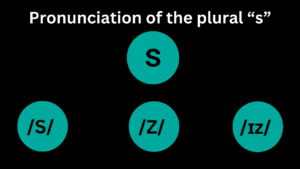Formal, Informal And Non-Formal Education
Below, there is a list of vocabulary items that exist in the unit about Formal Informal, And Non-Formal Education, Ticket To English.
No products in the cart.

Below, there is a list of vocabulary items that exist in the unit about Formal Informal, And Non-Formal Education, Ticket To English.

This article, Pronunciation Of The Past Simple Ending “-ed”, explores the three rules of pronouncing the “-ed” ending: /d/, /t/, or /ɪd/.

The pronunciation of the plural “s” in English can vary depending on the sound that comes before it: voiced, voiceless, or sibilant.

“Phonetic Symbols: A Key to Accurate Pronunciation”, discusses how phonetic symbols help learners achieve precise pronunciation.

This article, ‘How To Write An Argumentative Paragraph’ explores the essential elements and tips for writing an argumentative paragraph.

Mastering the pronunciation of the sound /e/ can be challenging. This article provides tips to improve your pronunciation of this sound.

In describing people, there are two things that we often focus on , appearance (physical description) and personality (mental description)

Gerunds are defined as verbs that take “ing” at the end, while infinitives refer to verbs that have “to” at the beginning.

Expressing likes and dislikes doesn’t mean being aware only of the words and expressions used for this purpose but of their usage as well.

Talking to people means communicating your ideas and exchanging views with them. That may include expressing your agreement and disagreement.

Expressing opinions the right way is valuable as it establishes a fruitful relationship with your listener, especially negotiating a topic.

English language test N° 7: grammar, vocabulary, functions, pronunciation, and spelling.